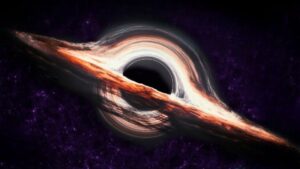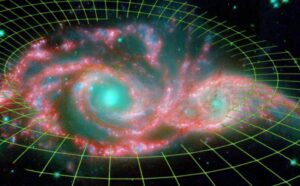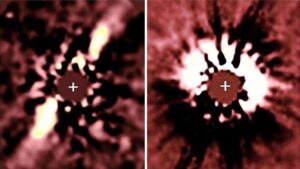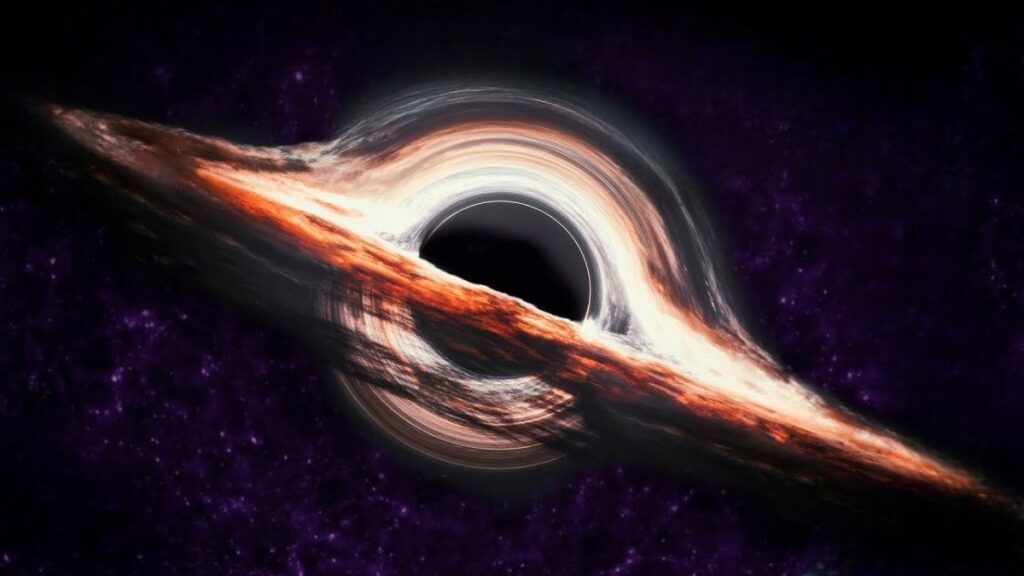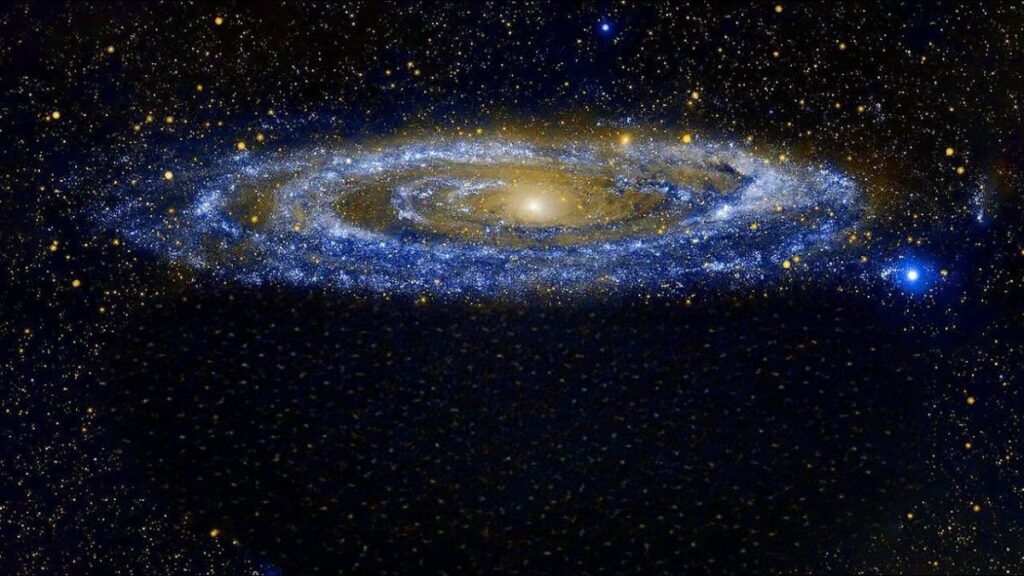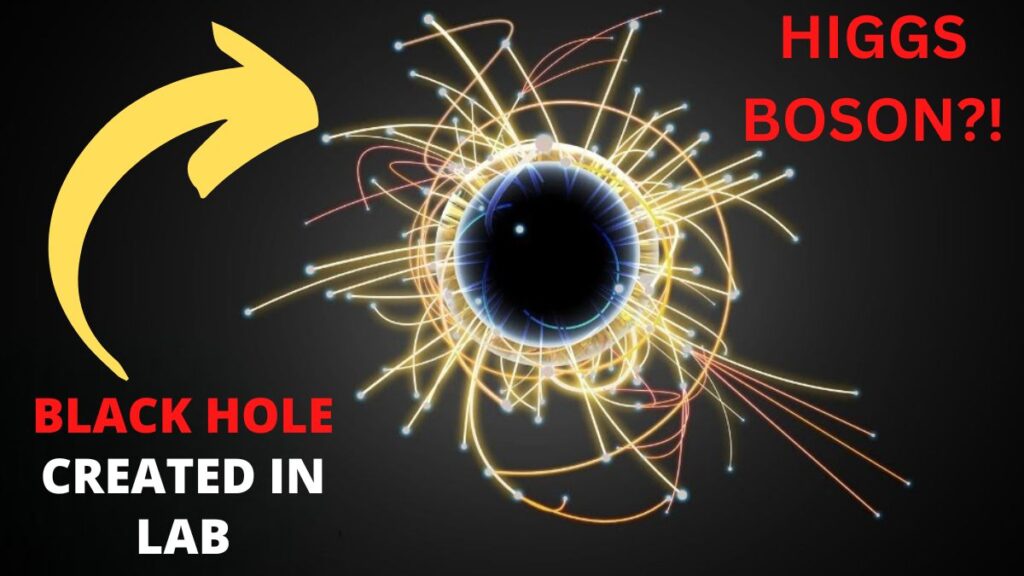
A black hole was created in a laboratory by a group of researchers, and then it began to mysteriously glow.
In particular, they used a chain of atoms to create the event horizon of a black hole in a laboratory.
In the grand scheme of things, the glow may finally shed light on aspects of quantum gravity and how black holes emit hawking radiation.
The point of no return in a black hole is the event horizon.
Even light, which is the fastest known object in the universe, is unable to escape due to the strength of the boundary’s gravitational force.
The English theoretical physicist Stephan Hawking proposed the Hawking radiation mechanism for the evaporation of black holes through black body radiation in 1974.
According to the mathematics of hawking radiation, it would take more than tens of thousands of years for astrophysical black holes to disappear through this phenomenon.
Additionally, even with the most cutting-edge tools at our disposal, we are unable to detect these black holes due to their extremely low energy output.
This is due to the fact that any signal would be lost in the cosmic microwave background’s noise.
The main reason why hawking radiation has never been detected is because of that.
However, a group of physicists has now found comparable radiation in the laboratory.
How did they find it?
Quantum mechanics and hawking radiation from black holes are inextricably linked.
Last but not least, and most importantly, how will this research help us get closer to the one theory that covers everything?
The theoretical framework known as the QFT, which incorporates aspects of quantum mechanics, special relativity, and classical physics, is the source of the Hawking radiation.
The quantum field theory asserts that the vacuum is not really empty.
Instead, it is filled with “virtual particles,” which appear and disappear in pairs in space out of nowhere.
“Vacuum fluctuations” are caused by these virtual particles.
To put it another way, they alter the amount of energy in space at random.
In pairs of a particle and an antiparticle, the virtual particles always appear and disappear.
The energy conservation law is said to be broken because these particles don’t have any energy in them.
One pair of particles has positive energy, while the other pair has negative energy when they form.
Because the particle and antiparticle annihilate each other within a time window provided by the energy-time heisenberg principle, this theoretically allows for a violation of energy conservation even though the pair’s net energy remains zero.
There is, however, a further twist.
The negative-energy particle sometimes crosses the event horizon and is absorbed by the black hole, but only if it moves in a radial direction toward the black hole.
Therefore, the uncertainty principle is not violated as the negative-energy particle from the vacuum fluctuation is absorbed by the black hole.
The positive-energy particle, on the other hand, is released and escapes into infinity.
The vacuum fluctuation causes the negative-energy particle to deplete the black hole’s energy, while the positive-energy particle increases the universe’s energy.
However, this still does not make sense.
Because how can it be that two particles appear out of thin air?
The intense gravity of the black hole provides the answer to this.
Due to the strong gravity of the black hole, it is thought that these particles appear close to the event horizon of the black hole.
But more importantly, the energy that escapes from the event horizon is transformed into the mass of the black hole itself.
As a result, hawking radiation reduces the black hole’s mass and energy.
Understanding the nature of hawking radiation is essential to comprehending the researchers’ actions.
So, how does it appear?
With a Planck spectrum, Hawking radiation behaves similarly to black body radiation, implying that the thermal radiation emitted by a black hole is comparable to that of a star.
The fact that the radiation’s temperature is inversely proportional to the mass of the black body is significant.
Therefore, the larger a black hole is, the cooler it is and the longer it will take for it to evaporate.
As a point of reference, the evaporation of a solar mass black hole would take ten times as long as 64 years.
On the other hand, a supermassive black hole with a mass of 100 billion solar masses would disintegrate in two to ten times as long as it takes to raise its power by one hundred years.
Because it is too faint to detect from supermassive black holes, hawking radiation has been elusive for a long time.
However, because its discovery could lead to ground-breaking results in physics and astronomy, researchers attempted to investigate its nature using black hole analogs grown in the laboratory.
By altering certain conditions to make the Hawking radiation solely thermal, a team from the University of Amsterdam conducted a comprehensive analysis of the radiation from the synthetic horizon.
In order to replicate the hopping of particles around the event horizon, they first constructed a one-dimensional atom chain for electrons to traverse.
By adjusting how easily electrons can move between each site, it was possible to mimic the warping of spacetime caused by a black hole.
They might be able to make a fake event horizon through this.
The effect of hawking radiation was observed as the team extended the atom chain beyond the artificial horizon.
This experiment yielded three significant findings.
The first is that real hawking radiation may also only be purely thermal in certain circumstances because the radiation was only thermal when certain spatial variations in the probability of hopping occurred.
The second is that hawking radiation requires entanglement.
Particle entanglement is basically a quantum mechanical effect that explains how two particles can be linked even though they are so far apart.
The team discovered that an entanglement between objects on either side of the horizon is directly linked to hawking radiation.
They came to the conclusion that hawking radiation necessitates altering the way space time warps.
It only took place when the model system started out with no spatial variation in hopping probabilities, resembling flat spacetime without a horizon, before it was transformed into one that contained a fake black hole.
Even though hawking radiation sounds exciting, there are implications for the rest of the universe.
A black hole first interacts with the universe through hawking radiation, which is a process in which the black hole emits particles due to quantum effects. The mass of the black hole decreases as it emits these particles, while the energy of the universe increases. This is how the universe and black holes interact thermally. As a result of this process, the black hole will eventually evaporate and become nothing if it remains isolated and does not consume any nearby stars.
They too will vanish over time.
But near the black hole’s end, something interesting happens.
The radiation temperature skyrockets toward the end because the black hole’s mass decreases with the temperature of the radiation.
Particle-heavy jets of high-energy radiation are the most likely form of high-energy radiation from these low-mass black holes.
Therefore, violent explosions in the form of x-rays and gamma rays are probably the black hole’s final destination.
Hawking radiation research may provide new insights into astro-particle physics and high-energy physics.
In the grand scheme of things, research on analog black holes and hawking radiation will open the door to investigating how quantum mechanics and the gravitational field interact, which may eventually lead to a single theory of quantum gravity.
Explore:


